Parents in the 1970s fought the same battle you do now – keeping kids busy on endless rainy days. The solution came in surprisingly simple forms: Shrinky Dinks transformed ovens into magical shrinking machines while Magna Doodles let kids draw without wasting paper. Family game nights got louder with Hungry Hungry Hippos, giving everyone something to laugh about together. These cheap-to-make toys sold by the millions because they worked so well at keeping kids engaged. Even with limited technology, toys like the Six Million Dollar Man’s bionic eye and Stretch Armstrong’s gel-filled limbs kept children fascinated for hours.
These clever playthings solved problems parents still face today while building skills no amount of screen time can replace.
15. Six Million Dollar Man Action Figures (1974)
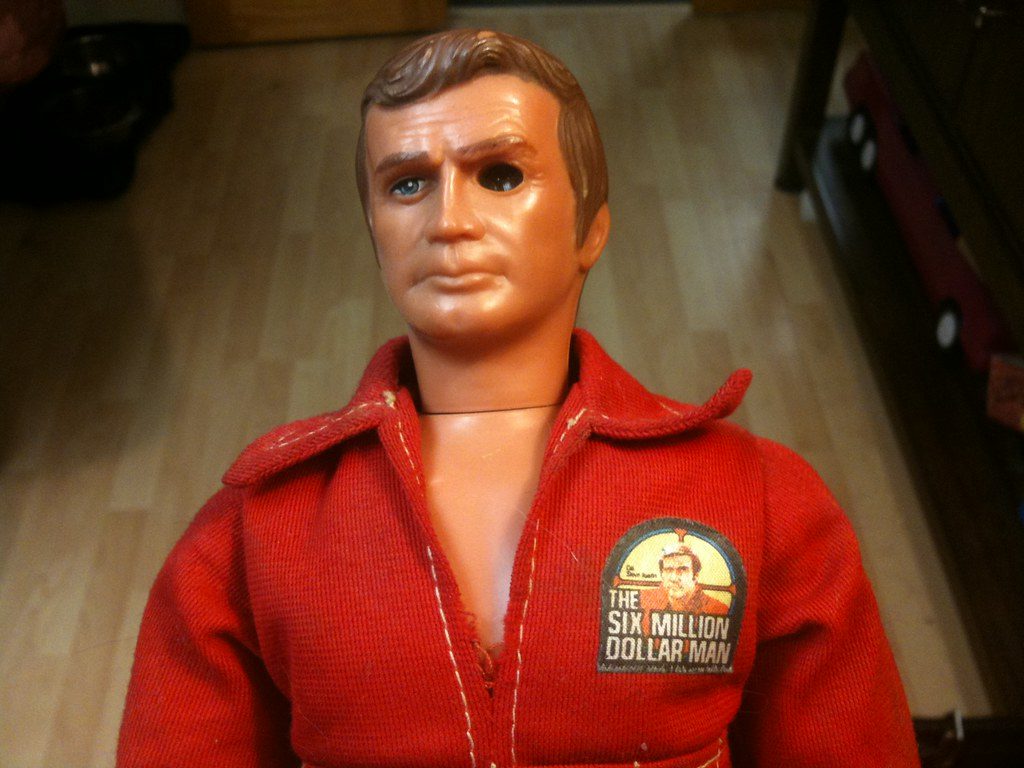
Bringing TV heroes into real-world play seemed impossible until Six Million Dollar Man action figures arrived with their revolutionary telescoping bionic eye feature. Kids spent hours recreating Steve Austin’s missions, mimicking that iconic sound effect as they launched into action. The telescoping bionic eye feature let children actually look through a tiny lens to “see” like the Six Million Dollar Man himself. TV tie-ins became crucial to toy marketing during this era, with these figures perfectly capturing the bionic zeitgeist of mid-70s entertainment.
14. Shrinky Dinks (1973)
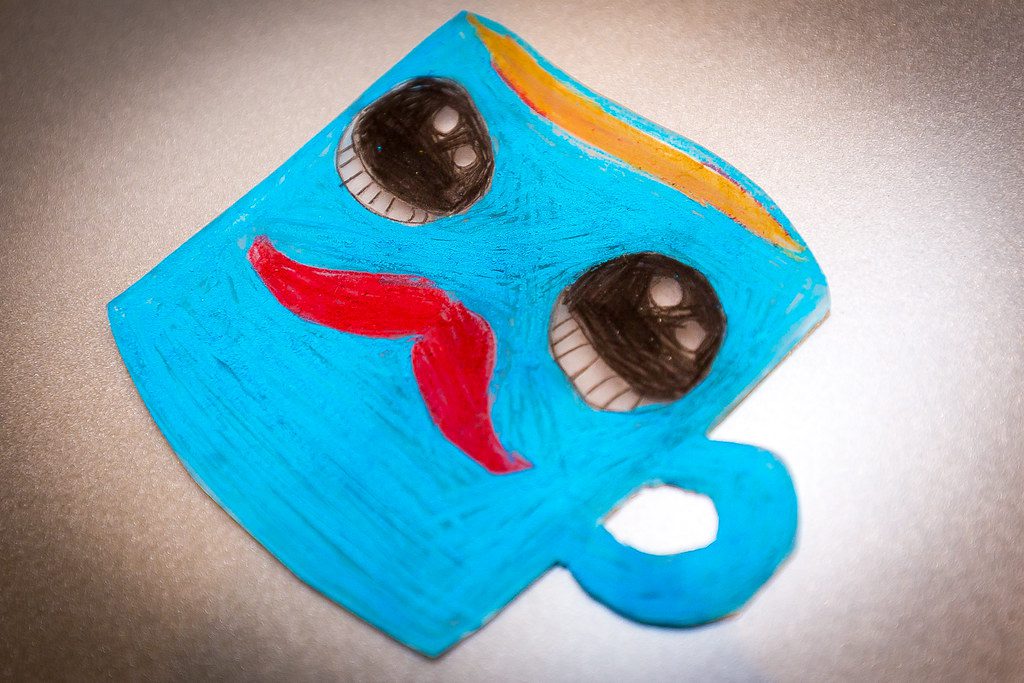
When rainy afternoons threatened to ruin playtime, Shrinky Dinks transformed kitchen ovens into magical creation stations that kept kids entertained for hours. When heated, they shrank to 1/3 of their original size while becoming 9 times thicker, transforming children’s colored designs into miniature plastic treasures. The combination of coloring, crafting, and magical transformation kept kids mesmerized for hours. Sales have exceeded 1 billion units since their introduction, with vintage kits now commanding £20-£40 among collectors seeking creative nostalgia.
13. Stretch Armstrong (1976)

The unique gel-filled interior of Stretch Armstrong let kids pull this rubbery hero to four times his normal size without breaking, creating a completely new play experience. Pushing the rubbery limbs to test their limits became a daily ritual for many children. Any tiny hole meant disaster – the mysterious gel inside would leak out, rendering Stretch sadly unstretched forever. These rubber heroes have become surprisingly valuable, with intact examples commanding serious money on today’s collector market.
12. Pet Rocks (1975)
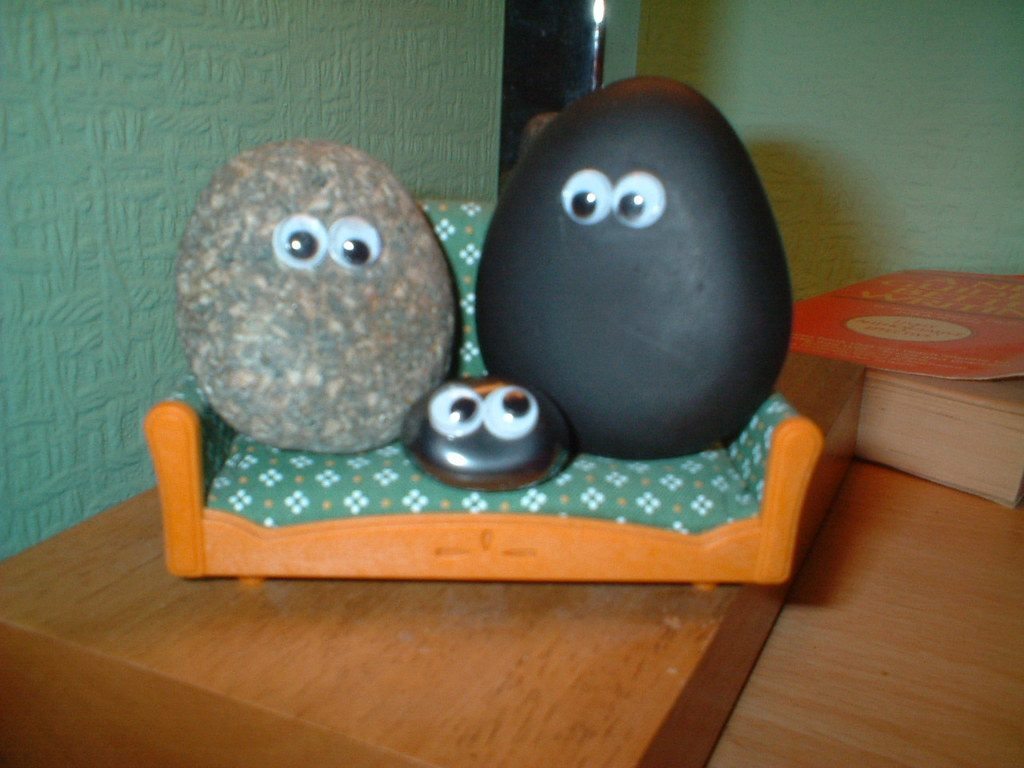
If you were baffled by the simplicity of 70s fads, Pet Rocks perfectly captured the decade’s marketing brilliance – turning ordinary stones into cherished companions through clever packaging alone. Each rock came packaged with air holes and care instructions, teaching a generation about clever packaging. Creator Gary Dahl became a millionaire from this brilliantly simple concept. Children treated these ordinary stones like living creatures, following the tongue-in-cheek manual with surprising devotion. No childhood fad better exemplifies 70s consumer culture than the humble Pet Rock.
11. Cindy Doll (1970)
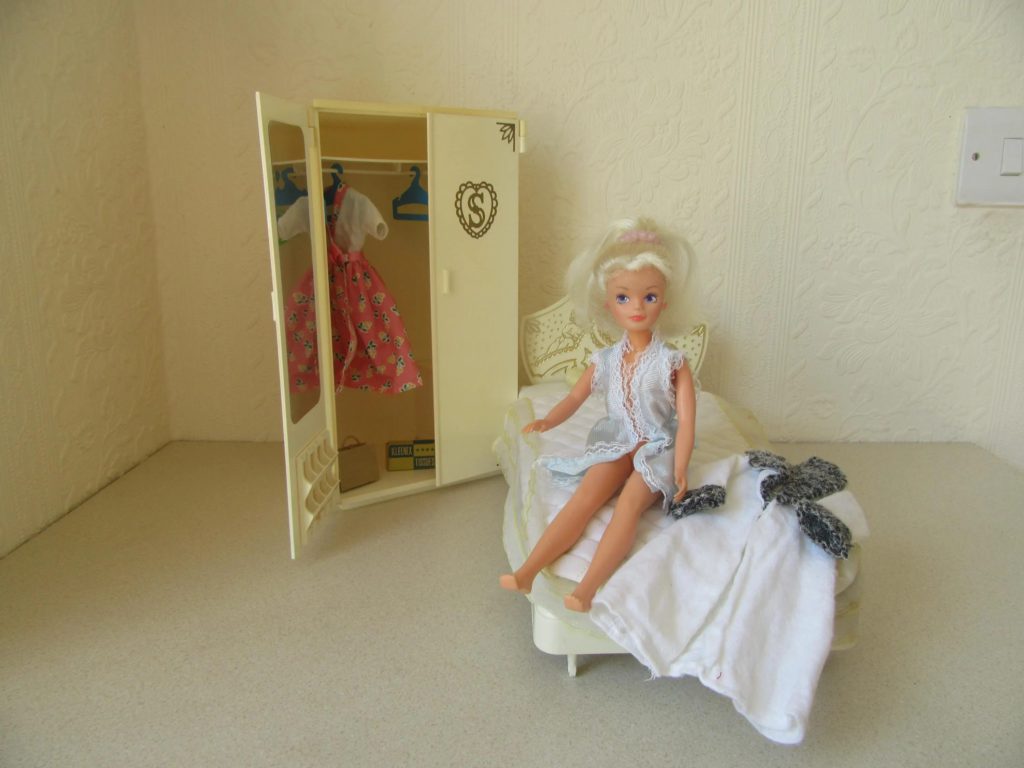
The Cindy Doll gave British girls an affordable fashion icon that reflected their own style sensibilities rather than American trends, becoming the UK’s answer to Barbie’s dominance. Standing 11.5 inches tall with a vinyl body and rooted hair, this fashion icon became the UK’s first serious Barbie rival. Bendable legs allowed for realistic posing, while her affordable price point made her accessible to more children. During peak popularity, manufacturers sold over 20 million dolls, making Cindy Britain’s best-selling fashion doll. Collectors now pay £50-£200 for vintage examples in good condition.
10. Nerf Ball (1970)
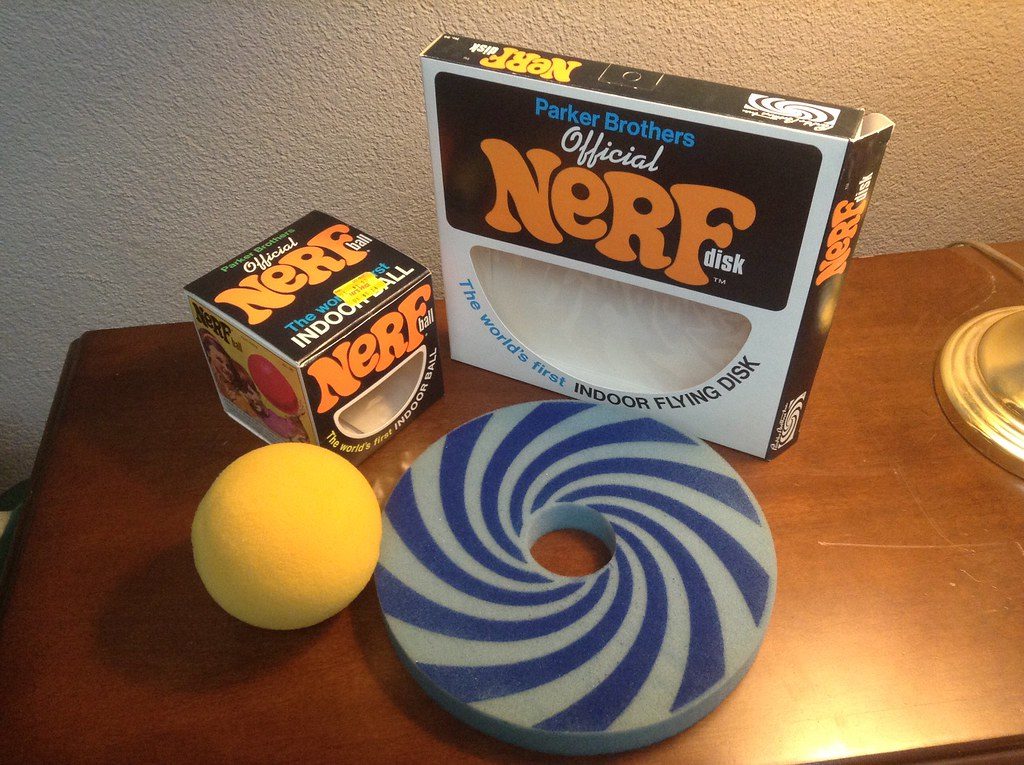
Indoor ball games left a trail of broken lamps and parental frustration until the Nerf Ball’s 4-inch diameter polyurethane form weighing just one ounce made it safe to play catch virtually anywhere. “You can’t hurt babies or old people!” proclaimed the memorable marketing campaign, positioning it as the world’s first official indoor ball. Kids could finally play catch in the living room without parental panic. First-year sales topped 4 million units, eventually generating over $400 million in lifetime revenue. Original examples now sell for $20-$50 to nostalgic collectors.
9. Space Hopper (1971)
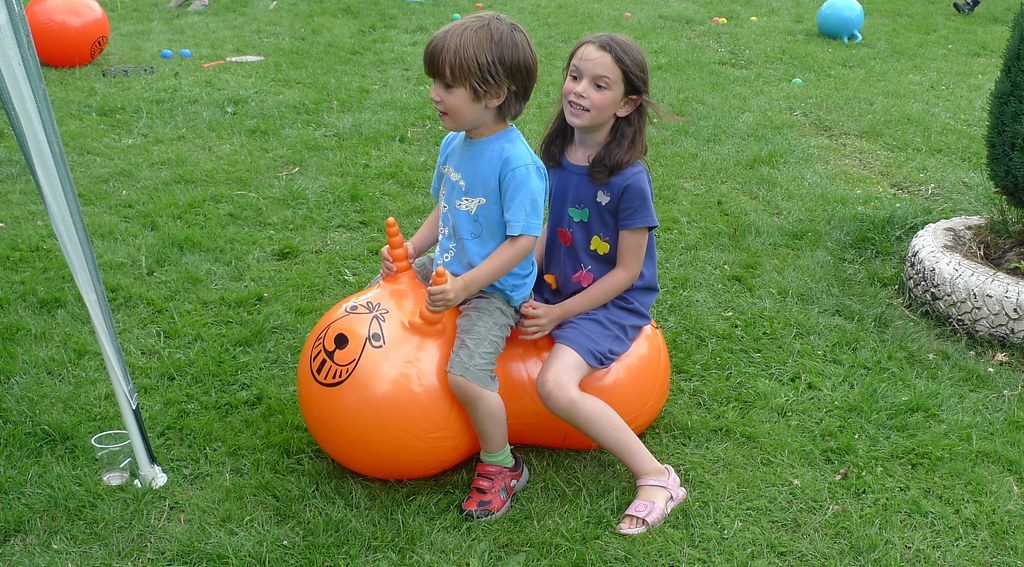
The Space Hopper’s distinctive orange design and bouncy mobility gave children a taste of independence, letting them literally bounce their way through neighborhoods with gleeful abandon. Measuring 60-65 cm in diameter with handles for gripping, Space Hoppers became cultural icons of childhood freedom. Physical activity and balance development came disguised as pure fun, though limited to outdoor spaces or particularly accommodating living rooms. Millions bounced their way across backyards worldwide, with original 70s hoppers now fetching £30-£50 from collectors seeking a nostalgic bounce.
8. Mastermind (1971)
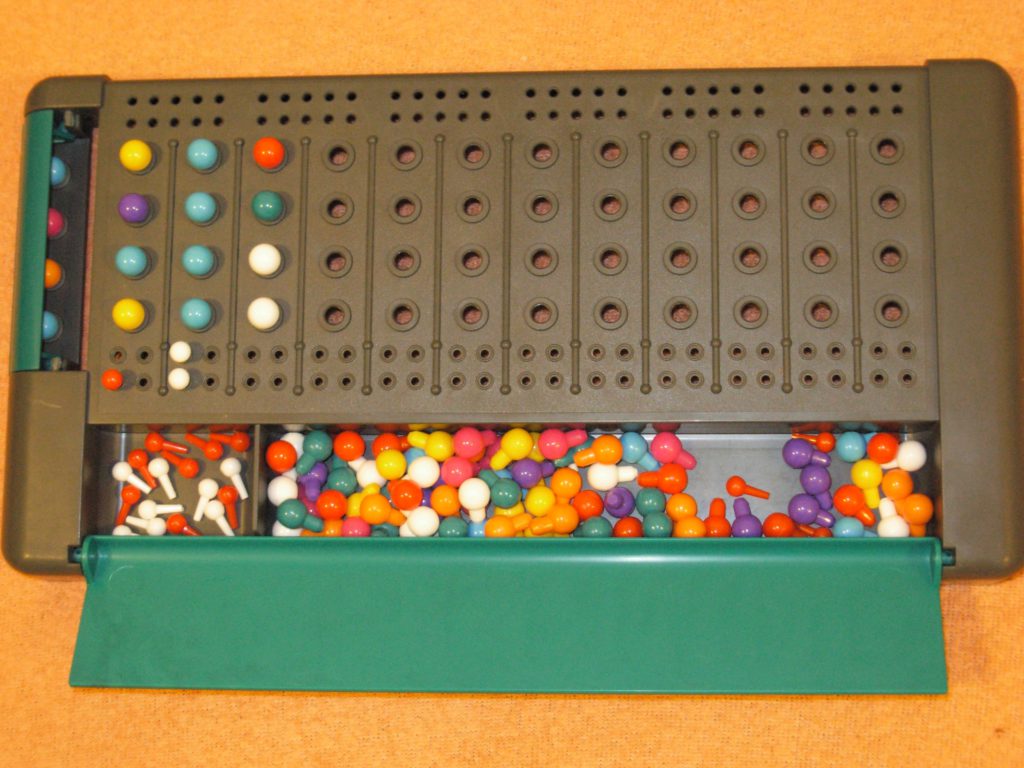
With just colored pegs and a simple board, Mastermind turned everyday players into code-breaking geniuses through a game that took minutes to learn but years to truly master. Players set secret color combinations while opponents attempted solutions in 10 moves or less. Mysterious figures on the box art gave the game an international spy thriller vibe. Logical thinking and deduction skills developed naturally through play, making Mastermind a parental favorite. With over 55 million copies sold worldwide, its impact lasted far beyond the 70s. Vintage sets in good condition now trade for £20-£40 among strategy game enthusiasts.
7. Uno (1971)
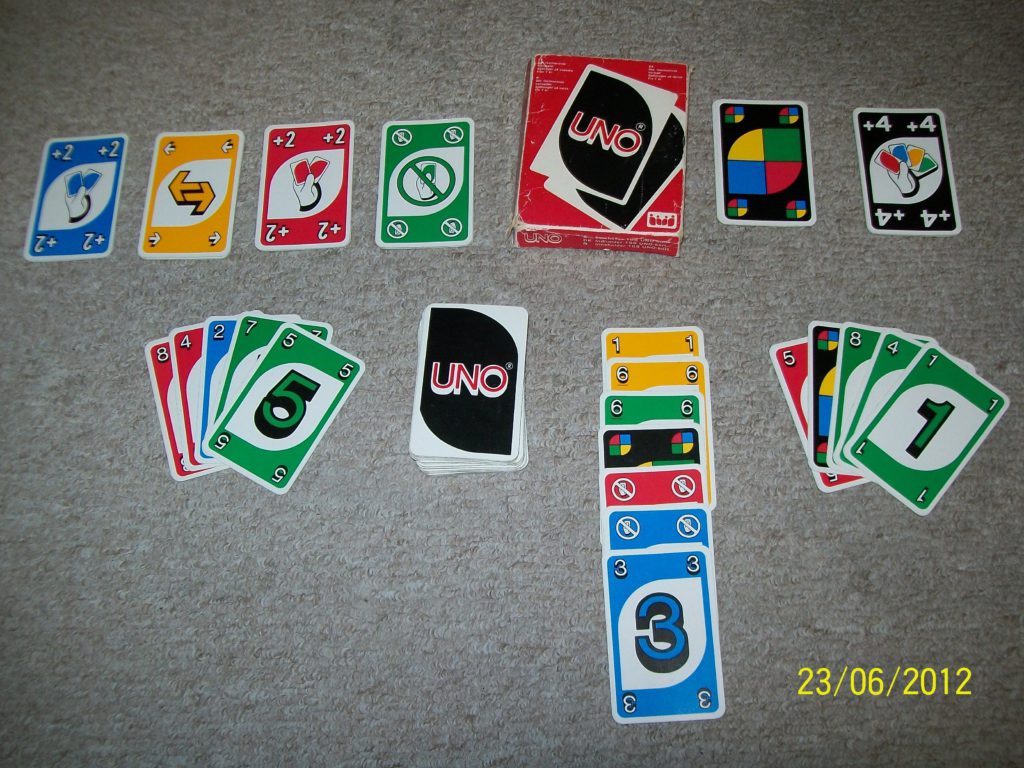
If you struggled finding games the whole family could enjoy, Uno’s color-coded simplicity bridged generation gaps, becoming the card game even grandparents could master alongside children. The 108-card deck supported 2-10 players with easy-to-learn rules suitable for multi-generational play. Special action cards added strategy to the quick-moving gameplay, creating a perfect family entertainment option. Global popularity transcended language barriers as Uno integrated into popular culture. Manufacturers have sold over 150 million copies worldwide, while vintage 1970s decks can fetch £30-£50 from serious card game collectors.
6. Dungeons and Dragons (1974)
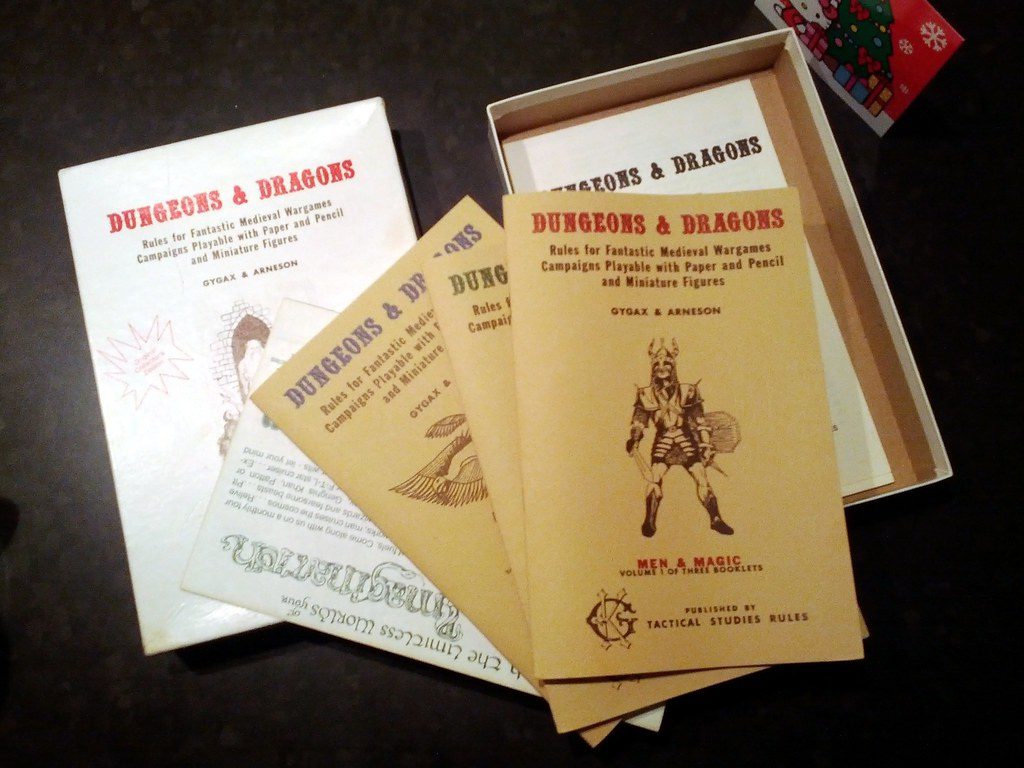
No toy from the 1970s changed entertainment more profoundly than Dungeons & Dragons, which created an entirely new category of imaginative play that continues influencing games today. Players created unique characters for adventures guided by Dungeon Masters who controlled the narrative world. Creative storytelling and problem-solving flourished in ways previously unseen in toys or games. A devoted subculture formed around the complex rulebooks, eventually influencing video game design and fantasy literature for decades. With over 20 million players worldwide, original 1974 boxed sets now command thousands of pounds from serious game collectors.
5. Othello (1975)
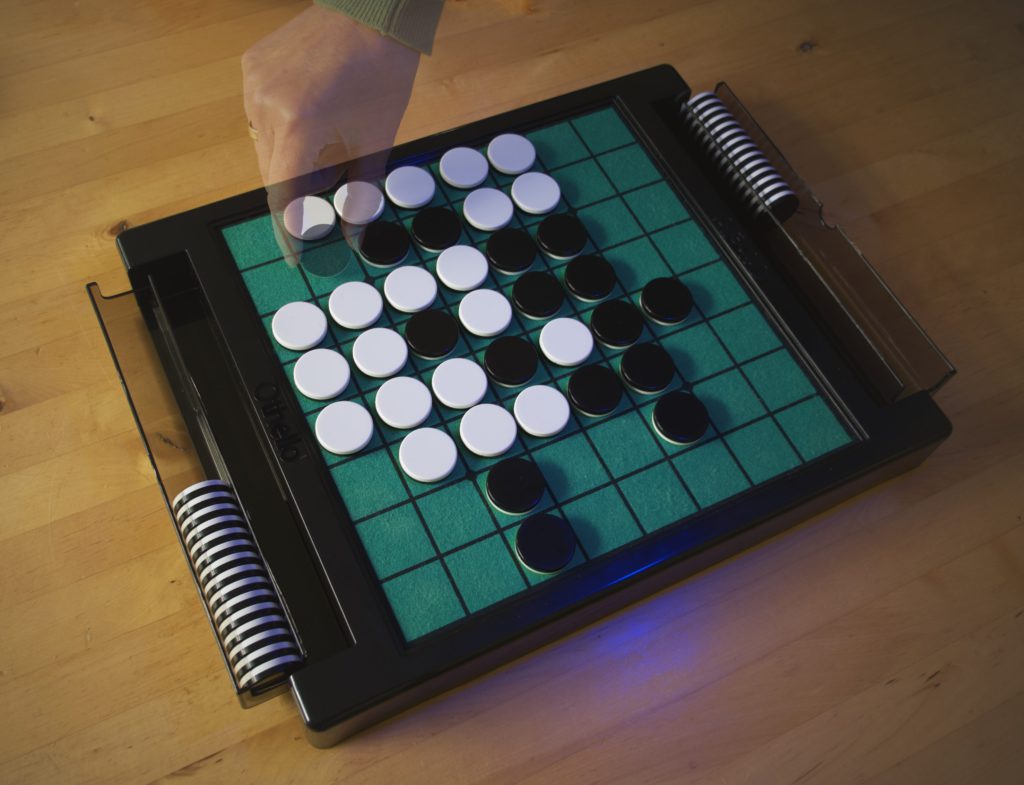
The Othello board game’s elegant 8×8 grid with 64 reversible discs belied its strategic depth, inviting players with the famous tagline “a minute to learn, a lifetime to master” that proved surprisingly accurate. The “minute to learn, lifetime to master” approach made Othello accessible yet endlessly challenging. International competitions began in 1977, with regular world championships continuing to this day. The game’s elegant simplicity influenced AI development as computer scientists tested their algorithms against human masters. Manufacturers have sold over 40 million sets, with vintage 1970s editions available for £20-£30 if found in good condition.
4. Magna Doodle (1976)
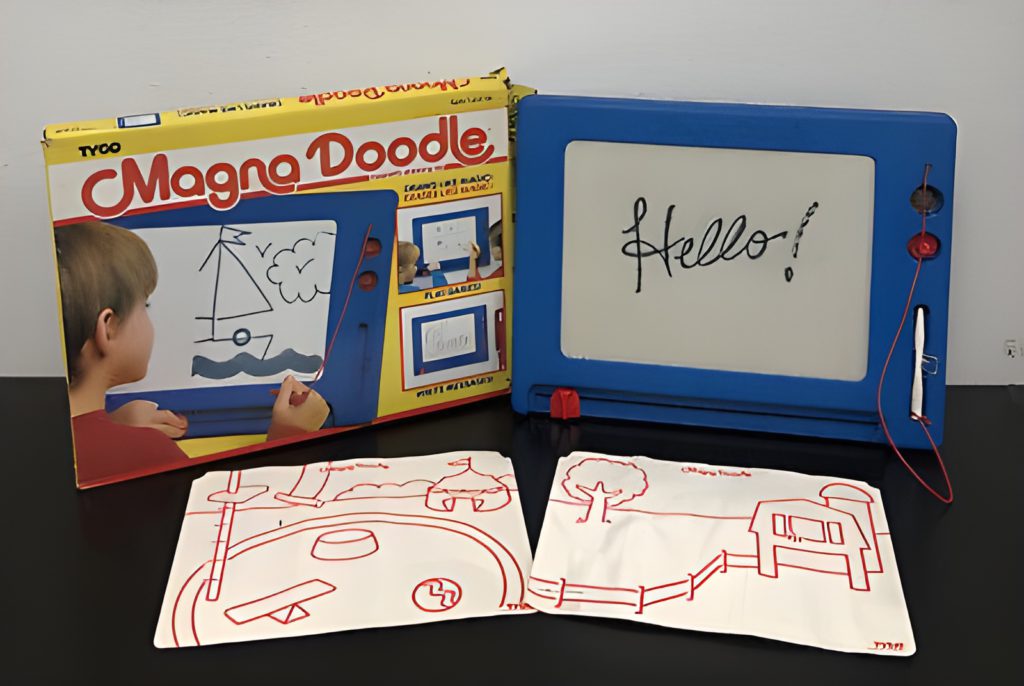
During long car journeys when boredom threatened family harmony, Magna Doodle provided mess-free creative entertainment that didn’t require constant supply replenishment. The reusable drawing surface produced no mess or waste, while the sliding eraser made starting fresh simple and satisfying. Parents appreciated the safe, clean design, while kids loved the ability to create anywhere without supplies. Despite monochrome limitations, Magna Doodle became a childhood staple that inspired countless imitators. Sales have exceeded 40 million units since introduction, with vintage 1970s models commanding £30-£50 from those seeking magnetic memories.
3. BMX Bikes (1977)
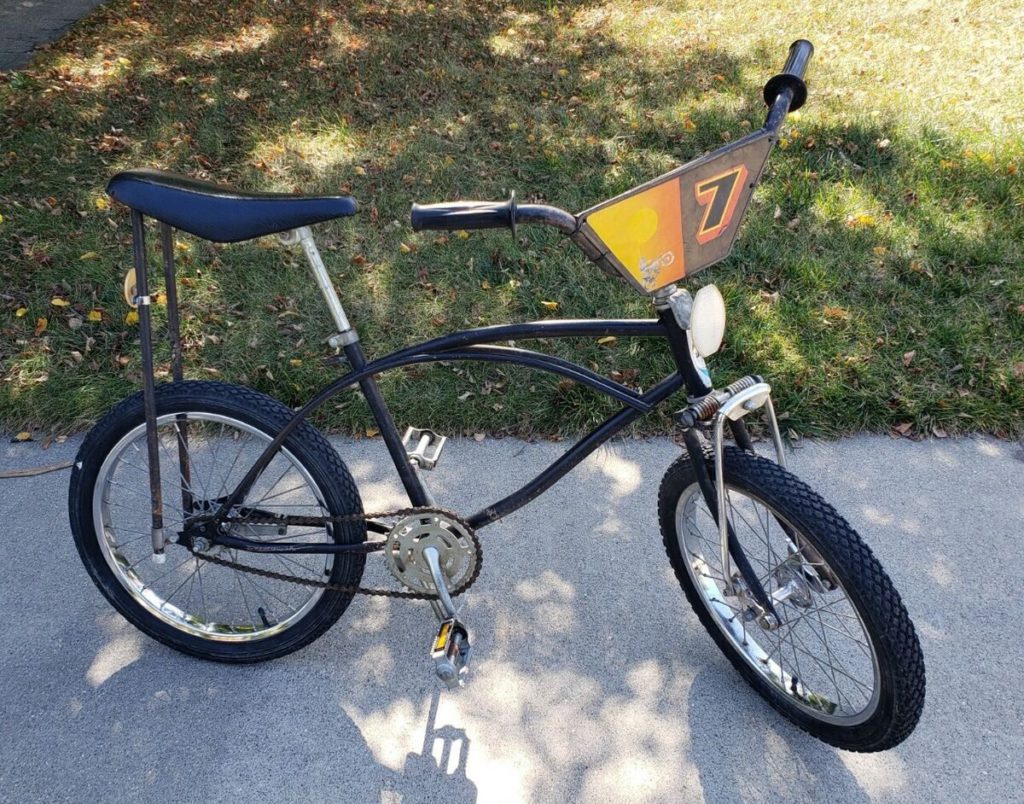
Reinforced frames and specialized components made BMX bikes virtually indestructible in the hands of adventurous kids, revolutionizing how a generation experienced neighborhood freedom. Though not strictly toys, BMX bikes dominated Argos sales reports in 1977, becoming the must-have item for adventure-seeking kids. The new youth subculture eventually led to BMX becoming an Olympic sport, showing how profoundly these bikes influenced activity and entertainment. Annual sales reached millions of units during peak popularity, with rare vintage 1970s models now worth £500-£2000+ to serious collectors.
2. Hungry Hungry Hippos (1978)
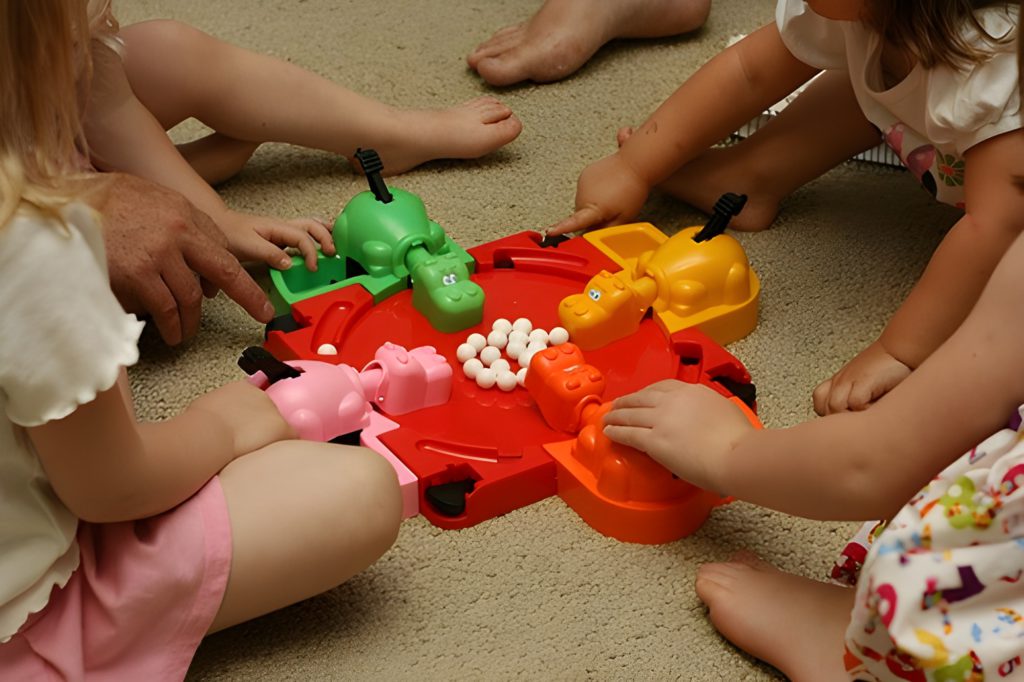
Finding games that excited young children without requiring reading skills challenged toy makers until Hungry Hungry Hippos turned simple marble-chomping action into frenzied competition. The 2-4 player action board game featured colorful plastic hippos with simple mechanical lever action to gobble marbles. No reading skills needed – just enthusiastic competition that engaged even very young children. Parents suffered through the noise while kids embraced the chaos. Millions of units sold worldwide, with complete original 1970s sets now valued at £30-£50 if all those easily lost marbles remain accounted for.
1. Strawberry Shortcake (1979)
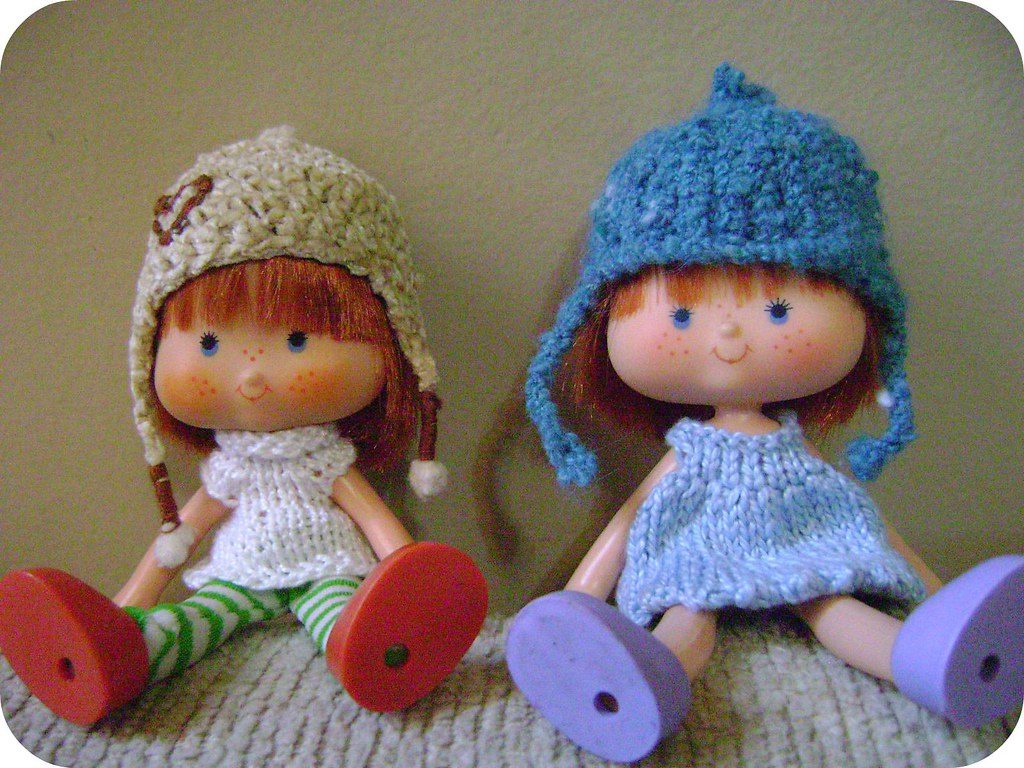
From greeting card character to billion-dollar franchise in under five years, Strawberry Shortcake’s meteoric rise marked a new era in character-driven toy marketing that companies still emulate today. The 5.5-inch scented dolls with fruit themes launched with an extensive collection of accessories and animated specials. Children were drawn to the unique scented feature, while the character-driven approach pioneered new toy marketing approaches. By 1985, the franchise generated over $1 billion in retail sales. Multiple revivals have appeared over subsequent decades, with vintage dolls now selling for £50-£200 depending on rarity and condition. If you enjoyed reading about these toys, you might also like to see what lifehacks people used to apply in the 70s.




























